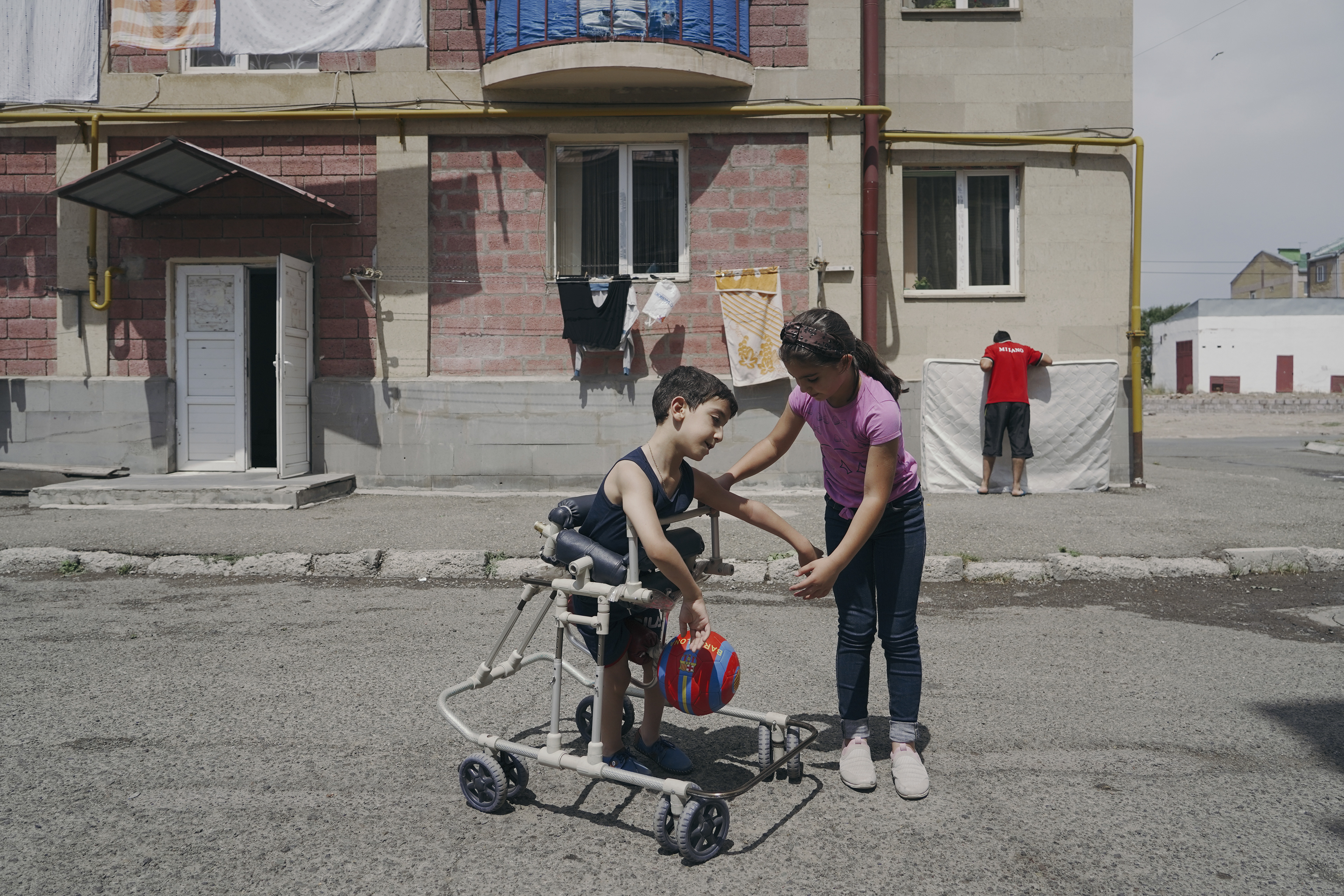
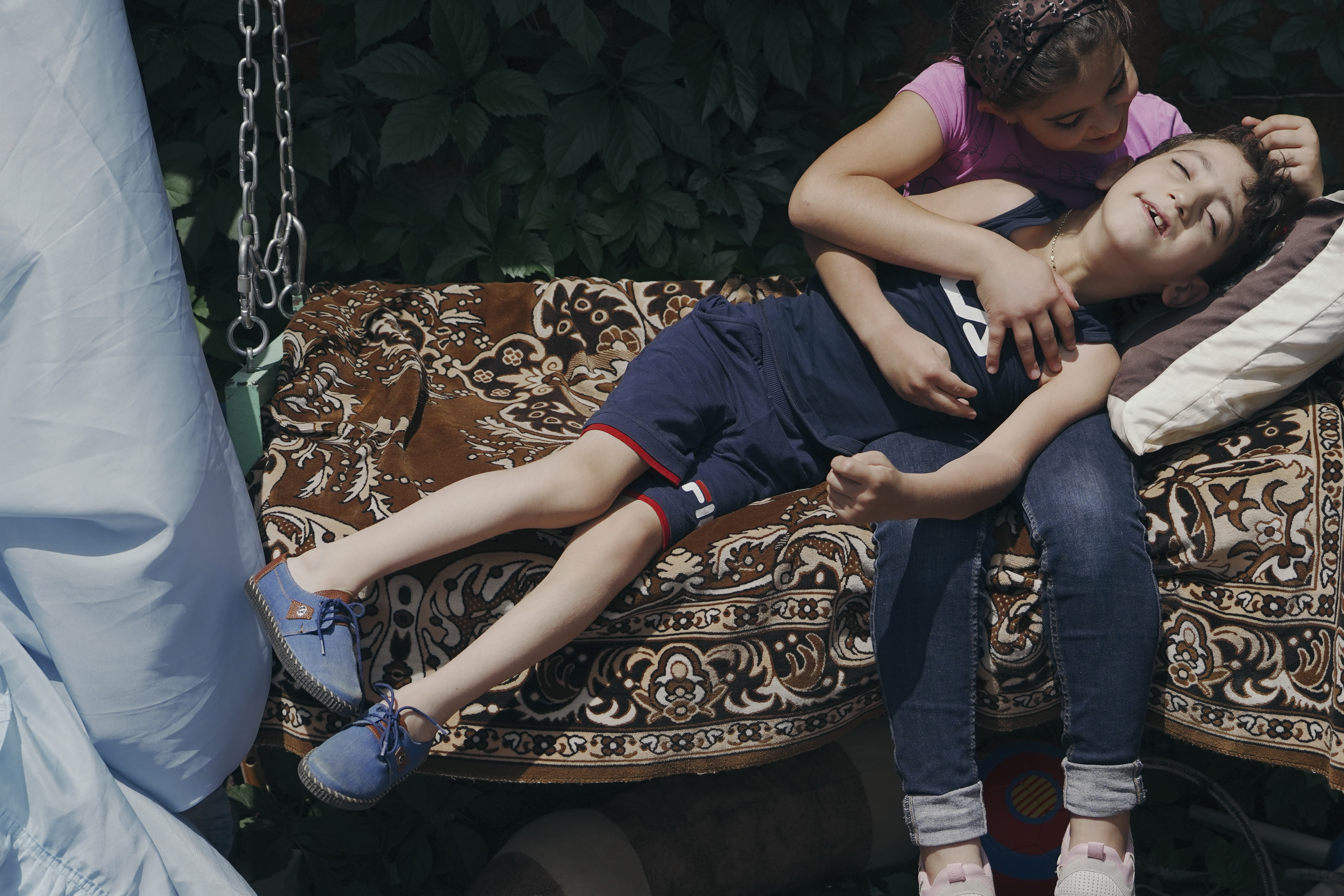
Felix, 7, suffers from cerebral palsy and requires expensive treatments and medicine the family can no longer afford.

Artyom Avetisyan used to be able to provide for his family through work as a day laborer and in construction.
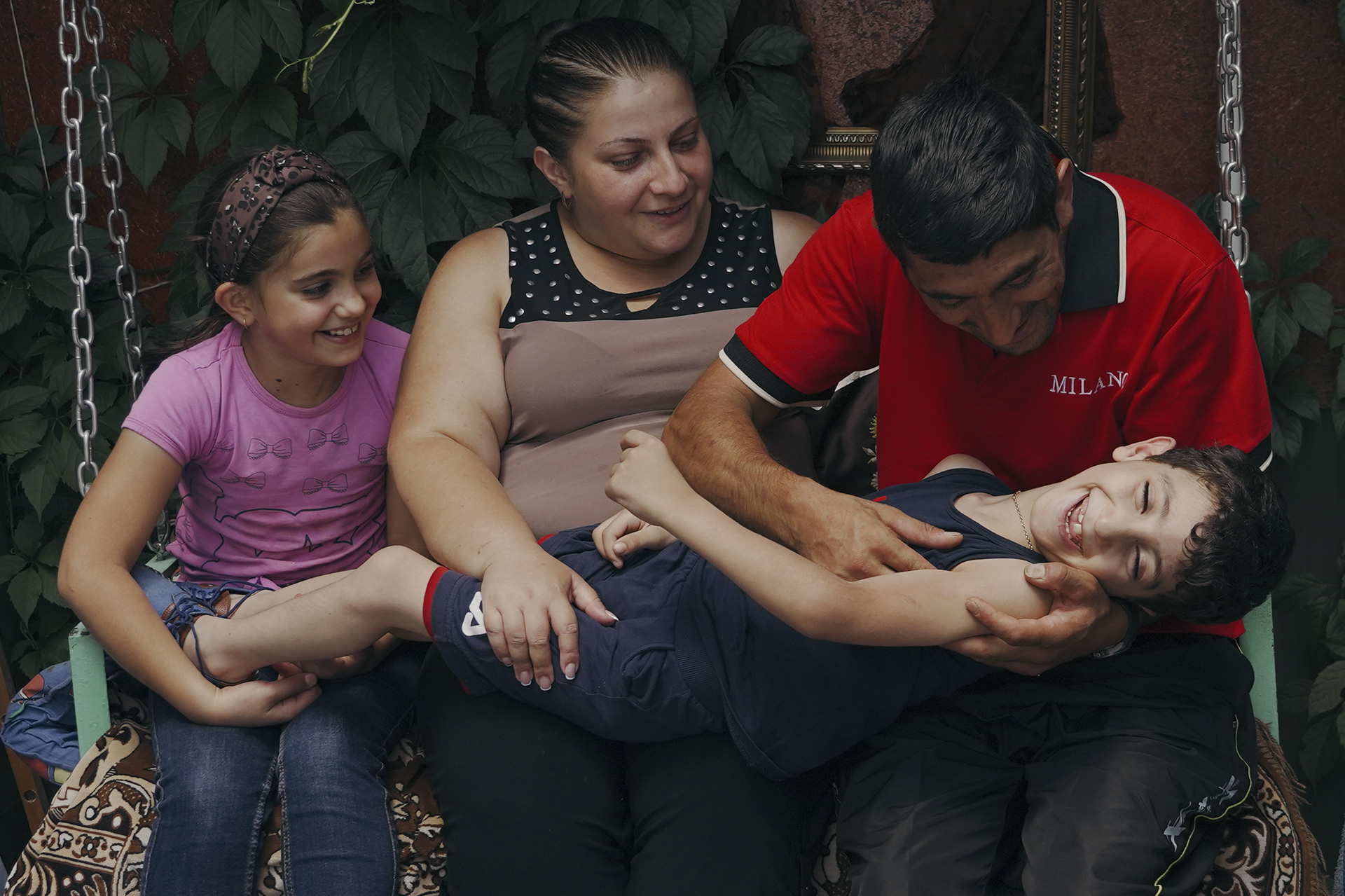
Now the family struggles with poverty during the pandemic.
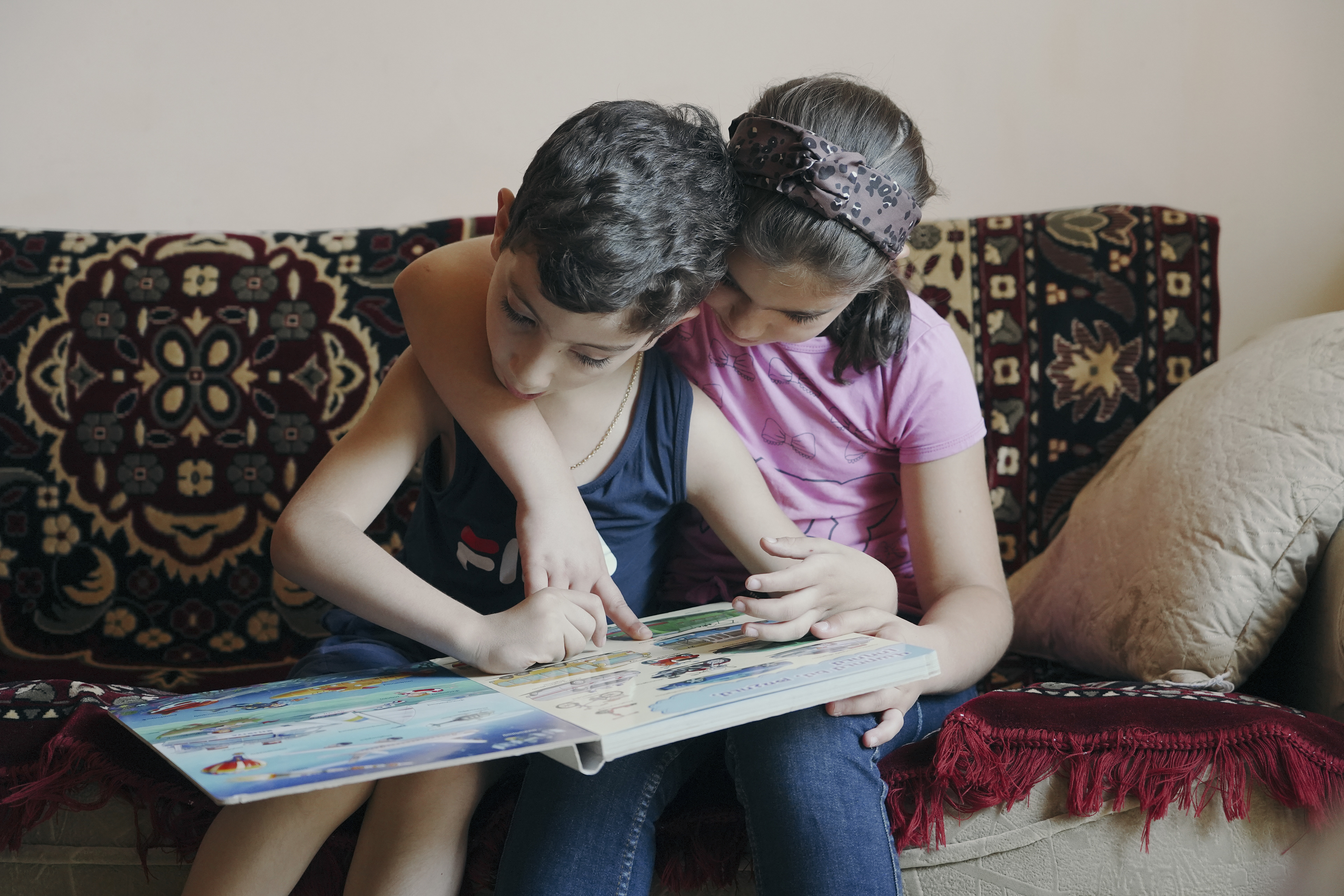
Donara, 9, and Felix missed several months of online schooling because the family did not have a computer or smartphone. The charity Caritas provided them with a computer late in 2020 so the children could study.
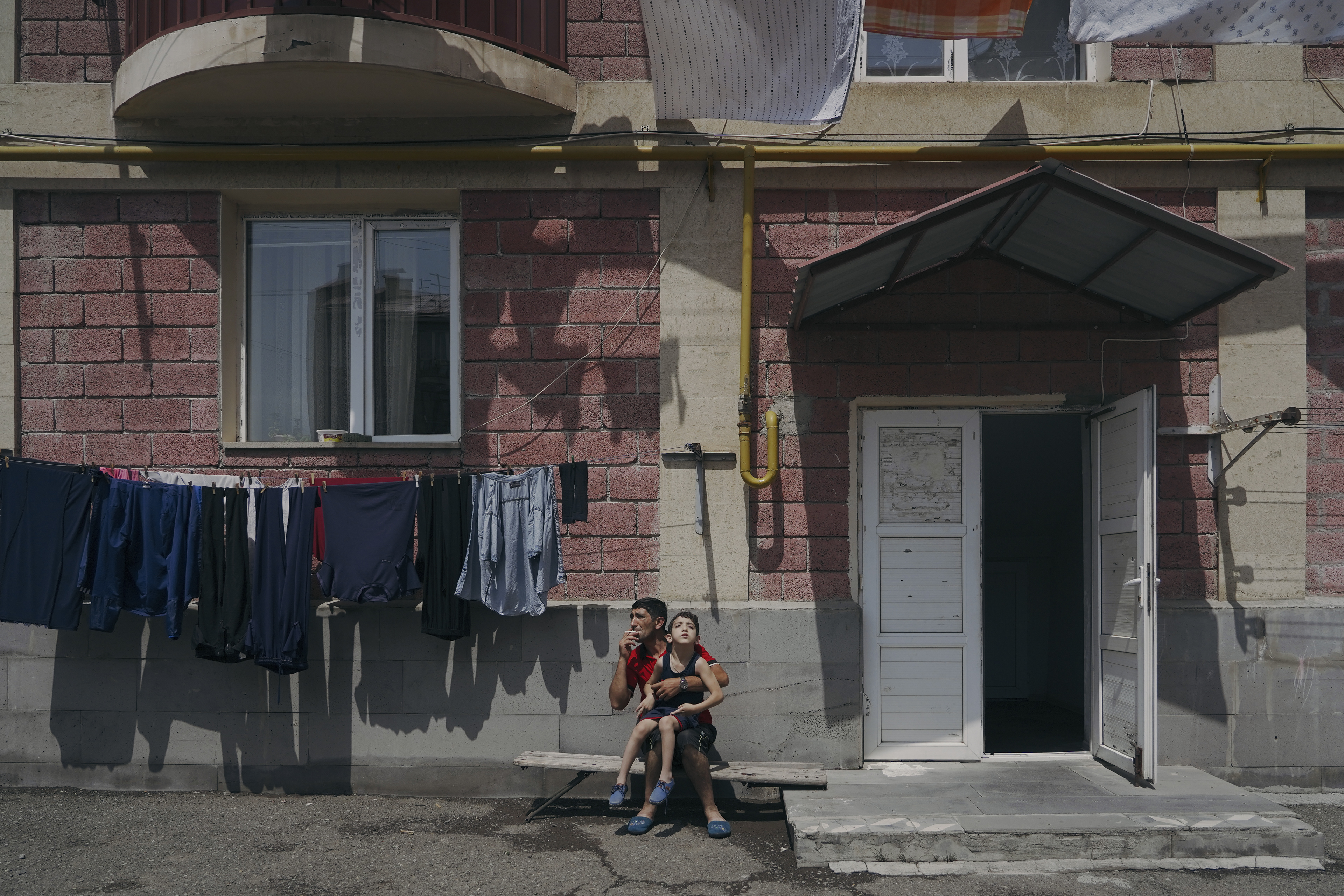
Families in Armenia have been hard hit by the pandemic as the economy contracted eight percent in 2020.

An estimated 370,000 Armenians are predicted to slide into poverty due to the economic crisis.

The situation is particularly dire in Shirak region, where the family lives. The Armenian government has proposed several measures to combat poverty over the course of 2021-2026, including increasing the minimum wage and providing monthly assistance to families with three or more children.
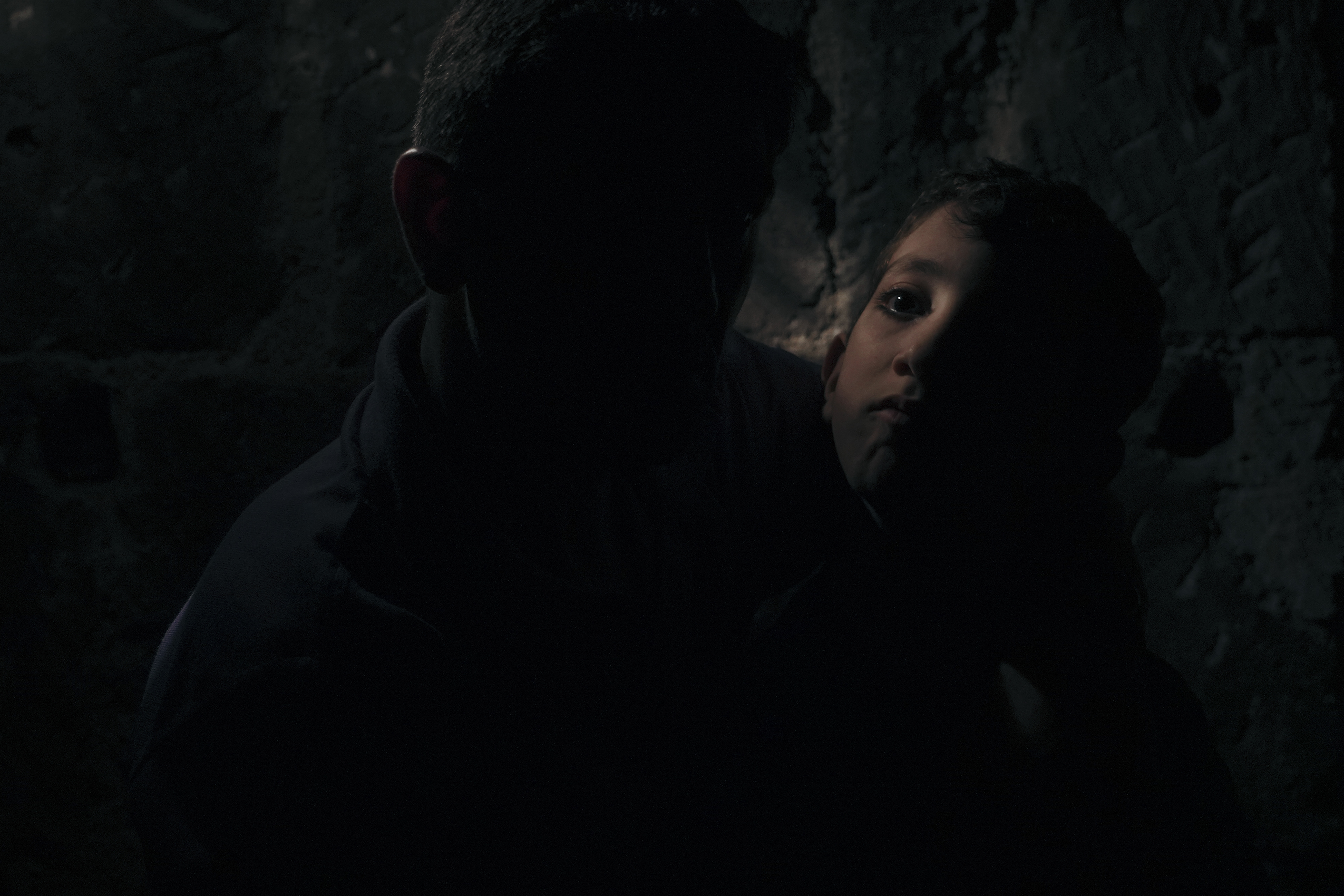
Artyom Avetisyan, a father of two from Gyumri, Armenia, lost his job when the pandemic struck. Over the past 19 months, his family of four has skirted homelessness and struggled to pay for the medication and treatment his seven-year-old son, Felix, depends on.
Before Covid-19 struck Armenia, Avetisyan says a steady stream of construction and day labor work kept his family fed and housed.
“I had a lot [of work] before the virus but once the virus spread, I stopped getting calls for work,” he said. “I had a [monthly] income of about 150,000 drams (just over $300), which my family lost.”
While Avetisyan earned below Armenian’s medium wage of $400 a month before Covid struck, the sudden loss of employment has affected his children’s lives on every level. Today, Avetisyan and his wife, Anna Davtyan, worry they will lose their apartment because they can no longer afford the 35,000-dram monthly rent.
The family has also struggled to pay for Felix’s therapy and other treatments. Felix, a third-grader, has cerebral palsy. Before the pandemic, the family was able to pay for his treatments (a total of 152,000 drams a month), in part due to the generosity of local charities and philanthropists.
But raising the necessary funds has been impossible since the pandemic started. Today the family is limited to the monthly assistance Felix receives from the state (roughly $50).
While the lack of income is a constant concern, the family is also struggling to make sure Felix and his older sister, nine-year-old Donara, don’t fall behind in school after missing months of online classes since the family didn’t have a computer or smartphone.
The Avetisyan family is far from alone in the struggle to survive following the economic collapse caused by the pandemic. An estimated 720,000 Armenians who slipped into poverty due to the pandemic. The Armenian economy contracted by eight percent in 2020 due to Covid-19 and the lockdown measures that were imposed to slow the spread of the virus, according to the World Bank.
“The short-term impacts of COVID-19 on household labor and nonlabor incomes could substantially increase poverty rates in Armenia,” the World Bank noted in a report published in February 2021.
The report found the poverty rate could increase from 33.6 percent to 46.6 percent due to the pandemic, with the number of people living in extreme poverty increasing from one percent to seven percent. “The economic shocks from COVID-19 could impoverish 370,000 Armenians. Over 720,000 (one in four) Armenians could suffer downward mobility, shifting to a lower-welfare group in 2020,” the report stated.
The Armenian government provided several one-time payments to help people survive the pandemic lockdown in 2020.
The assistance was allocated to specific groups that met certain criteria: each child in a family received a single payment of 26,500 drams; the officially employed received 68,000 dram as compensation during one month of the lockdown; and business owners in hard-hit sectors, like retail goods and tourism, were given 10 percent of their 2019 fourth quarter turn-over and their employees received the equivalent of half of one month’s pay.
As Avetisyan worked as a day laborer, he did not qualify for unemployment assistance. His family did receive the one-time payment allocated for children.
But months after that assistance ended, Avetisyan is still unemployed and has limited options until the economy recovers and he can find a job.
His situation is not uncommon for the Shirak region, where Gyumri is located. Even before the pandemic, the region had one of the highest poverty rates in Armenia—48.4 percent lived below the poverty line according to the World Bank.
The situation is particularly dire for children in the region, where an estimated one out of every two children lived in poverty.
The pandemic has made things worse, as travel restrictions made it impossible for people to travel to Russia for work.
In Maralik, Shirak, the Kirakosyan family lost their only source of income during the pandemic when the roads to Russia closed. For 7-year-old Davit, the lack of resources meant he couldn’t join online classes and he fell behind. Now a second grader, he still doesn’t know all the letters of the alphabet and cannot read or write.
Vardan Ikilikyan, the head of Azatan, one of the largest communities in the Shirak region, says that although technically it is possible to get to Russia now, the burden of PCR tests and higher travel costs effectively mean people are stuck at home.
"About 30 percent of the population of Azatan go abroad for work, mainly to Yakutsk, Moscow, Sakhalin, Vladivostok, where most work in construction. Due to the coronavirus, the workers here were unable to leave,” he said, estimating that around 300 families were affected in Azatan alone.
Journalist Narek Kirakosyan, photographer Artem Mikryukov for Chaikhana.Media
